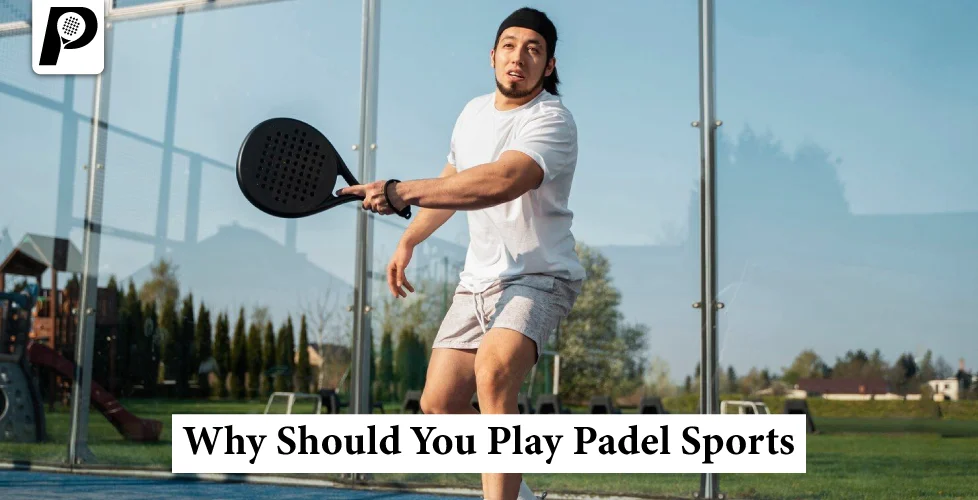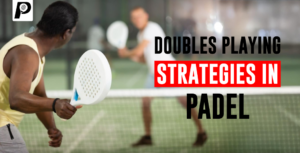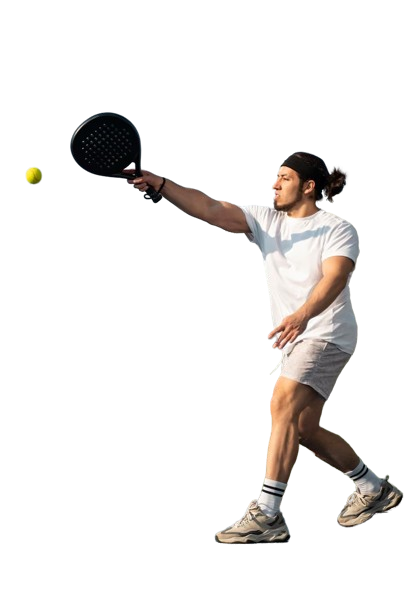In the ever-evolving world of sports and fitness, one game has been steadily gaining momentum across the globe—Padel. Whether you’re a beginner looking for a fun new activity or an experienced athlete seeking a strategic challenge, Padel offers something for everyone. A mix of tennis and squash, Padel is a sport that balances accessibility with excitement. In this blog, we’ll dive deep into the top reasons Why Should You Play Padel Sports today, exploring both its physical and mental benefits as well as its growing global appeal.
Read more: Mastering the Game at Your Padel Club: Tips and Techniques
What is Padel?
Padel is a racket sport typically played in doubles on an enclosed court roughly one-third the size of a tennis court. The walls surrounding the court are used similarly to squash, adding a unique element to the game. It combines the physical intensity of tennis with the strategic depth of squash. One of the defining characteristics of Padel is that it’s easy to learn but offers endless depth for those looking to hone their skills. Because of its versatility and social nature, it has quickly become a popular choice for people of all ages and fitness levels.
Read more: What is Padel? The Growing Trend in Racket Sports
How It Differs from Tennis and Squash:
- Smaller Court: Padel courts are smaller, requiring less running, which makes the game more manageable for beginners while still physically engaging.
- Walls in Play: The back and side walls are part of the game, allowing for longer rallies and more strategic shot-making.
- Underhand Serve: Unlike tennis, the serve in Padel is always underhand, making it easier for players to start a rally.
Now that you know the basics, let’s explore Why Should You Play Padel Sports?
Accessible for All Skill Levels
One of the top reasons to start playing Padel is its accessibility. Whether you’re an experienced athlete or completely new to racket sports, Padel offers a welcoming environment.
- Beginner-Friendly: The rules are simple, and the game is easy to pick up, even if you’ve never played a racket sport before. Within a few sessions, you’ll feel comfortable on the court.
- Low-Impact: The small court size and use of the walls reduce the physical strain typically associated with tennis or squash, making it ideal for players of all ages.
- Inclusive: Padel can be enjoyed by men and women, young and old. The sport is designed in such a way that different age groups and genders can play together, making it a family-friendly option.
Read more: Why Choose Padel Over Tennis? A Closer Look
Social and Fun
Padel is predominantly a doubles game, which means it’s naturally social. Whether you’re playing with family, friends, or coworkers, Padel offers a fantastic opportunity to bond over an active and engaging sport.
- Social Element: Playing in pairs fosters communication and teamwork. Whether you’re a competitive player or just enjoying a casual game, Padel is a great way to socialize and meet new people.
- Balanced Competition: Because Padel relies more on strategy and teamwork than pure physical prowess, the game often balances out well between players with varying skill levels. It’s common to see beginners holding their own against more experienced players.
- Fun and Engaging: The rallies in Padel tend to last longer than in tennis, which keeps the game engaging and exciting. The use of walls adds a fun twist, creating plenty of opportunities for creative shot-making.
A Great Workout with Low Injury Risk
While Padel is a fantastic way to have fun, it’s also an excellent workout. The game offers a combination of cardiovascular and strength training, yet it’s considered low-impact, reducing the risk of injury compared to other high-intensity sports like running or tennis.
- Cardiovascular Benefits: Padel keeps you moving, which is great for improving your cardiovascular health. The constant movement and quick changes in direction provide an effective aerobic workout.
- Full-Body Exercise: You’ll engage your core, legs, arms, and shoulders during a game, making it a great full-body workout.
- Low-Impact on Joints: Because the court is smaller and there’s less high-speed running, Padel places less strain on your knees and ankles, making it suitable for people with joint issues or those looking for a less physically taxing sport.
Read more: Is Padel the Same as Pickleball? Key Differences Explained
Quick Learning Curve
One of the most appealing aspects of Padel is how quickly you can pick up the game. While sports like tennis or squash can take years to master, Padel’s learning curve is much shorter.
- Easy to Learn: You don’t need a background in racket sports to enjoy Padel. The game’s rules are straightforward, and the smaller court size means you have more time to react to the ball.
- Faster Progress: Because of the simplicity of the basic techniques and underhand serve, you’ll be able to experience fun rallies within your first few sessions. As you continue to play, your skills will improve quickly.
Develops Mental and Physical Skills
While Padel is a physically engaging game, it’s equally challenging for your mind. The sport’s use of walls and the smaller court size demand both tactical and strategic thinking.
- Improves Hand-Eye Coordination: Regularly tracking and hitting the ball helps sharpen your reflexes and improves hand-eye coordination.
- Enhances Cognitive Function: Padel requires fast decision-making and quick thinking. You must assess your opponent’s position, anticipate their moves, and decide where to place your shot—all in a matter of seconds.
- Coordination with a Partner: In doubles, you and your partner need to work closely together, develop chemistry, and anticipate each other’s moves. This not only enhances your social skills but also your ability to function as part of a team.
Read more: Mastering the Basics: A Beginner’s Guide to Padel Game
Networking and Socializing Opportunities
Padel has quickly become a favorite sport for socializing and networking, especially in business circles. Many companies now organize Padel events as part of their team-building activities or corporate wellness programs.
- Corporate Tournaments: More and more organizations are adopting Padel as a go-to sport for building connections, both within and outside the company. It’s a great way to network with peers, clients, or potential business partners in a relaxed yet competitive environment.
- Padel Clubs: Many Padel clubs are social hubs where you can meet new people, participate in tournaments, and join group lessons or leagues.
Strategic and Tactical Game
While Padel is a sport that relies on athleticism, it is also one that rewards strategic thinking and tactical play. The game’s dynamics encourage players to focus on shot placement, positioning, and teamwork rather than sheer power.
- Use of Walls: The walls are an essential part of the game and can be used to extend rallies and outsmart your opponents. Mastering the angles and bounces is a key component of advanced Padel play.
- Tactical Shot Selection: In Padel, you’re constantly balancing offense and defense. Knowing when to attack and when to play a more controlled, defensive shot is a critical skill.
- Positioning: Good court positioning can often outweigh the need for powerful shots. Players who understand how to position themselves and anticipate their opponents’ moves often have the upper hand.
Read more: Unlocking the Secrets of Step Padel: Tips and Tricks for Success
Growing Global Popularity
Padel is one of the fastest-growing sports in the world, with a particularly strong presence in countries like Spain, Argentina, Sweden, and Italy. It is now starting to gain traction in other regions such as the UK, the United States, and the Middle East.
- Expanding Internationally: As Padel courts pop up across the globe, it’s becoming easier to find places to play no matter where you are. Whether you’re on vacation or a business trip, you’ll likely find Padel courts nearby.
- Professional Circuit: Padel now has a thriving professional scene, with top tournaments like the World Padel Tour (WPT) gaining significant attention and drawing large crowds.
Great for All Seasons
Because Padel is often played on indoor courts, you don’t have to worry about the weather interfering with your games. Many clubs offer indoor and outdoor courts, so you can enjoy the sport year-round.
- Indoor and Outdoor Play: Whether it’s raining or sunny, you can still get your Padel fix. Indoor courts ensure you won’t miss a game due to inclement weather.
- Climate-Controlled Comfort: Indoor Padel courts are typically climate-controlled, allowing you to play comfortably in any season.
Read more: Padel Club Tournaments: How to Prepare and What to Expect
Conclusion
when the question begain Why Should You Play Padel Sports? so Padel is more than just a sport—it’s a social, strategic, and physical activity that anyone can enjoy. With its growing global popularity, low barrier to entry, and exciting gameplay, now is the perfect time to give Padel a try. Whether you’re playing for fun, fitness, or competition, Padel offers something for everyone, from beginners to seasoned athletes.
So, why not grab a racket and head to your nearest Padel court? The benefits are clear, and the fun is endless!
Faq
Here’s a quick FAQ section to answer some common questions about Why Should You Play Padel Sports and why you should consider playing it.
What is Advantage in Padel?
When both pairs have won three points each, the score is called “deuce.” If a pair wins the next point, it’s called “advantage.” If they win the following point, they win the game. However, if they lose the point after gaining advantage, the score returns to “deuce.”
Read more: Top Padel Rackets Used in Major Padel Tournaments
Why is Padel Better Than Tennis?
Padel courts are smaller than tennis courts, and the walls can be used during play. The ball moves at a slower speed, making turns less challenging and reducing strain on your back. Additionally, the underarm serve in padel, done after the ball bounces, puts significantly less pressure on your back compared to tennis serves.
Is Padel hard to learn?
No, Padel is easy to learn, making it beginner-friendly. The rules are simple, and the underhand serve allows new players to get the hang of the game quickly. It offers a quick learning curve, so players of all skill levels can enjoy it after just a few sessions.
What are the physical benefits of playing Padel?
Padel provides an excellent full-body workout. It improves cardiovascular health, enhances hand-eye coordination, and engages core, legs, arms, and shoulders. Despite being a physically engaging sport, it’s low-impact, meaning there’s less strain on your joints compared to high-impact activities like running.
Read more: How Playing Padel on a Padel Court Enhances Mental and Physical Well-being
Is Padel only for young or athletic people?
No, Padel is designed for all ages and skill levels. Its low-impact nature and smaller court size make it suitable for everyone, including children, seniors, and people with different fitness levels. Players of varying abilities can enjoy the sport together.
Why is Padel considered a social sport?
Padel is a doubles game, so it encourages teamwork and communication. Many people play Padel with friends, family, or as part of a social league. The social aspect, combined with the fun nature of the game, makes it a great way to meet new people and stay active.
Is Padel a good workout?
Yes, Padel offers a mix of cardiovascular and strength training. It helps burn calories, improves your endurance, and engages multiple muscle groups. On average, an hour of Padel can burn around 500 calories.
How does Padel improve mental skills?
Padel is a fast-paced game that requires quick decision-making and strategy. Players need to anticipate their opponent’s moves, think tactically, and work closely with their partner, which enhances mental sharpness, reflexes, and cognitive function.
Read more: Top 10 Health Benefits of Playing the Padel Game
Is Padel good for networking?
Yes, Padel has become popular for socializing and networking, particularly in corporate settings. Many companies now host Padel tournaments as part of their team-building or corporate wellness activities. It’s a great way to connect with colleagues, clients, and peers in a relaxed environment.
What is the difference between Padel and tennis?
The main differences between Padel and tennis include the court size, rules, and gameplay dynamics. Padel is played on a smaller court with walls that are part of the game, making the rallies longer. Additionally, Padel has an underhand serve, and the focus is more on strategy than raw power, unlike tennis.
Is Padel popular worldwide?
Yes, Padel is one of the fastest-growing sports globally, particularly in countries like Spain, Argentina, Sweden, and Italy. It is now spreading to other regions, including the UK, US, and Middle Eastern countries. Its rising popularity has led to the development of professional circuits like the World Padel Tour (WPT).
Read more: Health Benefits of Playing on Padel Courts
Can I play Padel year-round?
Yes! Many Padel clubs offer both indoor and outdoor courts, allowing you to play regardless of the weather. Indoor courts are typically climate-controlled, making Padel a comfortable year-round activity.
How can I start playing Padel?
To get started, find a local Padel club or sports center that offers Padel courts. Most clubs have equipment rentals, so you don’t need to invest in gear right away. You can also take lessons or join a group to learn the basics and meet new players.
Why Should You Play Padel Sports? If you’re interested in a sport that is fun, easy to learn, physically engaging, and great for socializing, Padel is a perfect choice. Why not give it a try today?







